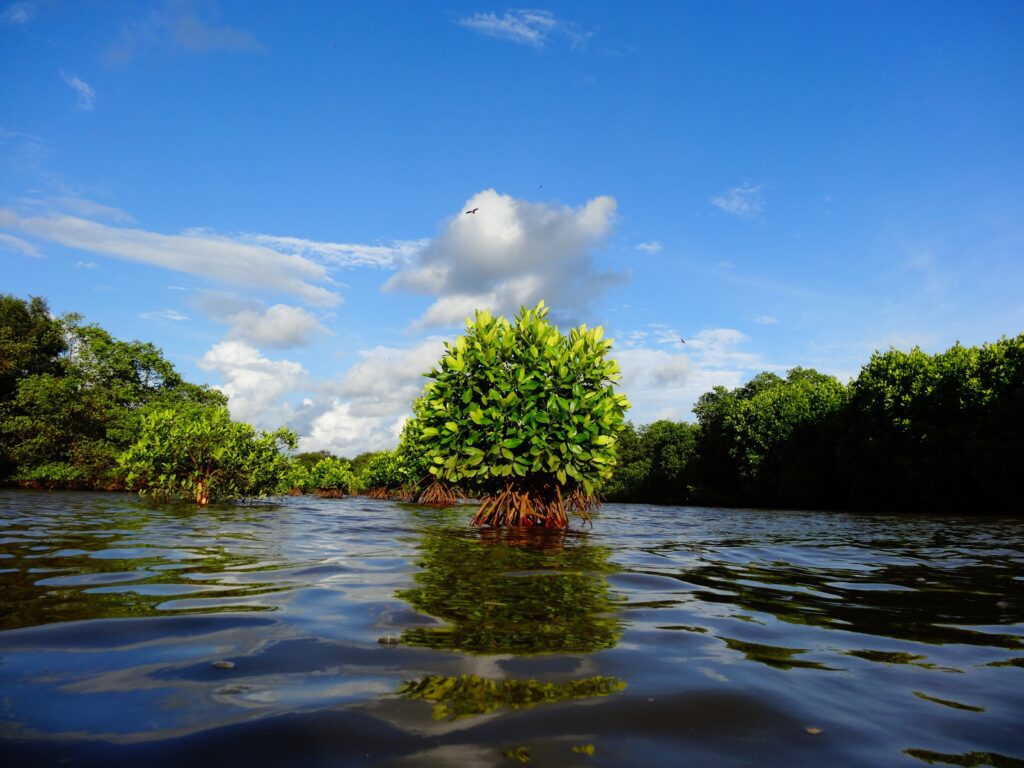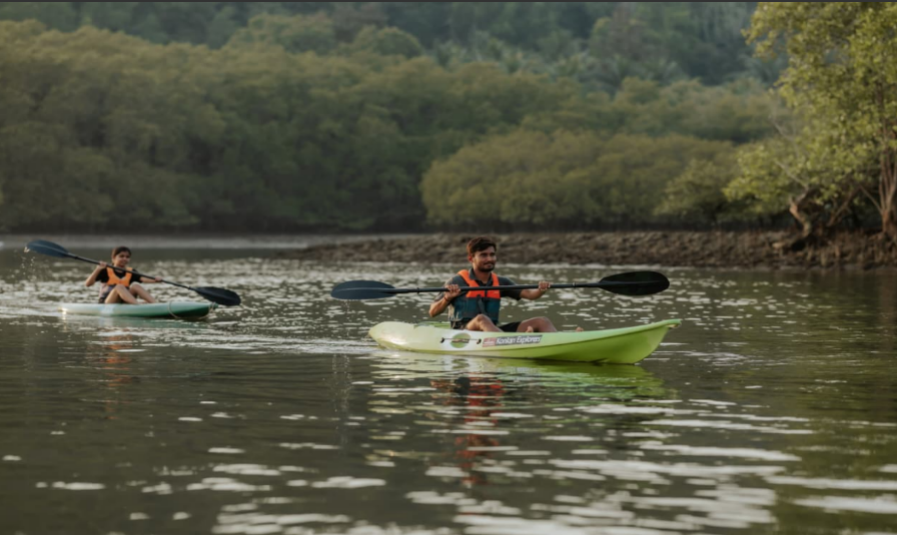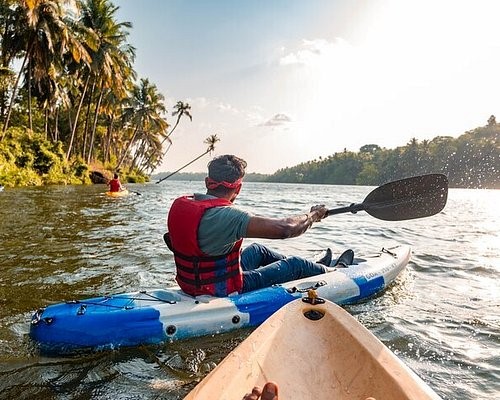Nothing compares to taking a plane to another country to go kayaking. The adventure ahead of you will undoubtedly become a tale you’ll be telling for the rest of your life. The adrenaline of the journey is tremendous, and the chance to paddle through new, exotic, or stunning landscapes through uncharted water is particularly invigorating.
Of course, traveling also comes with a lot of small annoyances, and going on a kayaking vacation is no exception. You will find plenty of places for kayaking in Goa. In this article, we’re referring to things like waiting in the queue at the airport, cramming everything into your pack, having your legs give out on the water after five hours of paddling, or struggling to get your stuff out midway through a trip on the lake.

Five tips to follow to make your first kayaking trip successful
The thrilling water activity of kayaking has become extremely popular among adventure seekers. It is a wonderful way to take in nature’s wonder and the ocean’s serenity. The experience of kayaking, however, can be overpowering and difficult for newcomers. To guarantee a good first kayaking excursion.
It is necessary to be well-organized and equipped with the required abilities. This post will review five suggestions to help you have a memorable and pleasurable first kayaking adventure. These pointers can help you have a safe and enjoyable kayaking journey, whether you are a professional kayaker or new to the sport.
Learn the Basics First
- Use a loose grip when holding the paddle. This lowers the risk of muscular strain while enabling you to regulate your kayak’s motions while remaining flexible.
- You can propel your boat forward by paddling quickly, rhythmically, and deeply.
- Depending on the turn you want to make, sweep strokes should be wider than your advance strokes and should be applied in the opposite direction.
- Follow your own paddling style if it makes you feel at ease and helps you move more organically on the water.
- Most importantly, maintain a balanced center of gravity for your upper body: maintain a forward-facing nose that is in line with the center of the boat.
- When upright, steering is much simpler, and tipping is almost impossible. You may see how much movement the kayak will allow you to have by rocking your hips while maintaining your balance.
Even though sticking your paddle in the water and pulling seems pretty simple, there are many sea kayaking “basics” that beginners frequently miss. Here is a quick reference guide to common methods so you can do it correctly the first time:
Time to Practice the Basics
If you want to get better at sea kayaking, practice makes perfect. However, you don’t want to begin in the water. Every lesson starts with making the right moves on the beach to build muscle memory. After practicing strokes repeatedly on land, check your technique in shallow, calm water.
Step it up by traveling to more open seas with your group if the boat is moving well and you are confident and comfortable with your paddling. You can pull yourself out of any position if you have solid forward strokes, good sweep strokes, and good corrective strokes. There are multiple stations for the best kayaking in Goa if you want to practice your basics.
Even so, anything may happen while you’re new, like flipping over. Following these four steps will let you exit the boat if it tips over and you find yourself submerged:
- Forward flexion
- Use your paddle to push the boat’s bottom.
- Untie yourself from the boat’s spray skirt, which was once protecting but is now restricting you.
- Check that the skirt is completely removed, then exit the boat.
When you’re in a panic, and your head is in chilly salt water, all of it can be a lot to remember. Do not worry; gravity will prevail if you go upside down. Keep on the top of your head that if you go upside down, gravity rules and plays its role to its fullest. To put it another way, you might just instinctively propel yourself out of the boat.
Choose your route and keep an eye on the weather

It advises getting to know the area where you plan to paddle, keeping in mind that bays and other sheltered areas are better for novices because they are shielded from the stronger winds and rougher waters of the open sea.
To obtain a broad notion of what the weather might do on the water, consult a maritime forecast, but even on a gorgeous, clear day, you should always prepare for some wind and waves. As much as possible, avoid the fog. Fog is a serious problem that might arrive rapidly. You could completely lose sight of your land in five to ten minutes if visibility is gone, which is a terrible prospect.
Bring a map
Even though you have a GPS on your iPhone or Android, that is a fantastic tool to bring kayaking. Try the Lifeproof cover for stylish, top-notch protection, but they’re only as useful as their battery life or, as is frequently a problem on the ocean. Their reception signal is crucial to understand how to use a compass and read nautical charts. Even more difficult is remembering to pack them.
Have at least a companion
It’s never a smart idea to go kayaking by yourself, and it’s even worse if you’re a beginner. Recognize that while the ocean is vast, strong, and pretty unexpected, it need not be frightening. Your trip will be safer and presumably more enjoyable the more paddlers you bring along.
Go with an experienced group, and you’ll gain priceless knowledge from it if you are exposed to the wide range of situations that’ll impact your ability to paddle with an experienced group of guides the very first time around.”
In Short:
In summary, kayaking is enjoyable and thrilling to experience the outdoors and discover nature. Beginners, though, could find it scary. The five suggestions in this article can help you have a pleasant first kayaking excursion. Choose the appropriate equipment, make a schedule, practice safe paddling approaches, stay protected on the water’s surface, and have fun.
Goa has become a hub for kayaking, and there is plenty of the best kayaking in Goa. So you can develop your kayaking into a lifelong pastime that offers numerous chances for exploration and enjoyment with some planning and a positive outlook.
FAQs
What do beginners need to know about kayaking?
Before beginning, if you are new to kayaking, you should be aware of the following:
- Depending on your level of experience and the sort of water you will be paddling in, various kayak varieties are available. A recreational kayak is a wonderful option for novices because it is sturdy and simple to control.
- Wear the right equipment: Even if you have a strong swimming ability, you should always wear a personal flotation device (PFD) or life jacket when kayaking. A paddle, waterproof bag, adequate clothing, and footwear are necessities.
- Learn how to paddle properly: Using the right technique will help you save energy and stay safe. You can watch online courses or enroll in a beginner’s program to learn the basics.
- Always look at the weather and the water before going kayaking. Avoid paddling in storms, strong winds, or choppy waters.
- Keep hydrated and fed: Kayaking can be strenuous, so pack plenty of water and snacks to keep yourself nourished and hydrated.
Always put safety first when kayaking, and never compromise on it. You can have a safe and pleasurable day on the water by paying attention to these suggestions and taking the time to master the fundamentals.
What is most important to remember about kayaking?
Safety is the most crucial consideration when kayaking. As part of this, you should always wear a personal flotation device (PFD) or life jacket, be mindful of the weather and the water, paddle with a partner or in a group, and refrain from drinking alcohol before or during your kayaking trip.
Respecting the environment and according to any rules or laws applicable to the area where you are kayaking are equally as vital as safety. This entails keeping on authorized waterways, not disturbing wildlife or harming the ecosystem, and appropriately eliminating trash and waste.
Preparation and attentiveness are, in general, the keys to a good kayaking adventure. You may have a great time on the water while remaining safe by planning, comprehending the hazards, and adhering to the necessary safety precautions.
What are the qualities of a good kayak?
A good kayak can have various attributes depending on the intended purpose and the kayaker’s preferences. However, some characteristics of a good kayak in general include:
- Stability: A good kayak must be steady in the water to avoid tipping over or capsizing.
- Kayak maneuverability: The kayak must be simple to move around and steer, especially in confined locations or choppy water.
- Durability: A decent kayak should be constructed of high-quality components and designed to resist normal use-related wear and tear.
- Comfort: Long-term sitting in a kayak should be pleasant, with the back and legs receiving the correct support.
- Speed: You should be able to cover more ground in a shorter time if the kayak can travel through the water quickly.
The characteristics of a decent kayak ultimately depend on your requirements and intended use. To ensure you obtain the perfect kayak for your needs, it’s crucial to conduct research, speak with other kayakers, and test out several kayaks before deciding.






